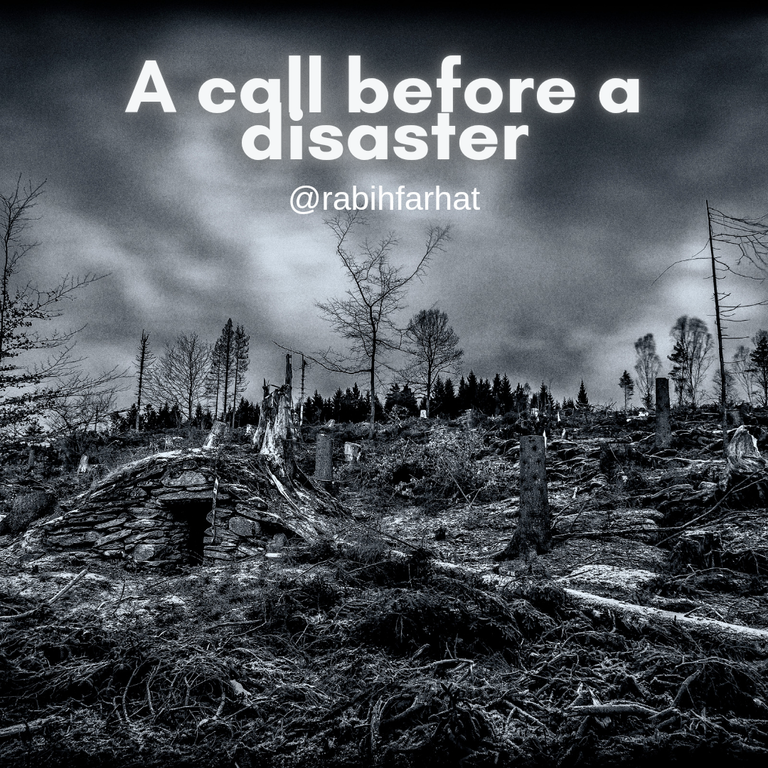Introduction
Two types of disasters strike the world around us. The first type are sudden disasters that come without warning, occur suddenly, and cause unpredictable losses, including people and their properties.
The second type are estimated and expected disasters
resulting from developments and events that happen while we are looking, and amidst the course of events, and knowledge of the expected dangers and possible outcomes.

Each type of disaster is handled according to a specific form of human interaction. In cases of natural and sudden disasters such as earthquakes, floods, volcanoes and epidemics, countries move along with various organizations and associations, and capabilities and actively participate with countries in playing their role in helping victims, in rescue operations and providing assistance in order to return people to normal life or put them in this context at the very least.
As for the second type of disasters resulting from major developments and events, efforts begin with the preludes of the disaster, then continue sequentially, after the indicators of the disaster increase, as in wars, which cause famines, waves of migration, displacement, poverty, hunger, and health disasters.
As in the responses related to the first type, countries, organizations, and associations begin to provide aid to the victims and help them overcome the consequences of wars, their repercussions, and results, and prevent them from going to the worst, and work to restore the victims to their normal lives.
The war in Syria, which has been ongoing for 13 years, has witnessed both types of disasters together. The repeated earthquakes in Turkey, especially in the 2023, left devastating effects on Syrians and their property in multiple areas in northern and western Syria, and the second type of repercussions of the war left its effects in at least two disasters; The first is a general famine that includes all Syrian regions, and the second, is ongoing and escalating, consecrated by the deterioration of health conditions, especially in the northwestern regions of the country, which are confronted by a single and modest medical services apparatus, whose existence and work depend on full funding from humanitarian aid, unlike other Syrian regions. This aid will stop according to UN announcements by next month, i.e. starting in October 2024, which will create a real dangerous reality.
What increases the danger of the health conditions in the region are 3 local facts:
The first is that the medical services apparatus provides its services to more than 5 million Syrians confined to a small geographical area with a higher population density compared to the situation in other Syrian regions.
The second is that the region is under Turkish control, and the administration is shared by the “Syrian Interim Government” affiliated with the coalition and “the Salvation Government” affiliated with the extremist “Hayat Tahrir al-Sham” (a party like ISIS). In addition to the devastation of its administration and the internal conflicts between its parties, it is targeted from its surroundings, where the “Syrian Democratic Forces" are in the east, and the regime forces and their Russian and Iranian allies are from the south and east, and it is exposed daily to aerial and artillery bombardment.
The third is that it is an area closed off economically from its surroundings and has limited economic capabilities and resources, and most of these resources are under the control of the de facto powers, and the resources are the subject of political and armed conflicts between them.
Amidst the many difficult facts, the health services system, which includes about 100 hospitals in the region, will stop working completely, including the "Bab al-Hawa” Crossing Hospital on the border with Turkey, which is the largest and most important; as it provides dozens of free services to nearly two million people, including surgical operations, including pediatric surgeries, and provides kidney dialysis, and gives chemotherapy doses to cancer patients, and in addition to the above, it is an educational center, where dozens of graduate students reside.
As the data shows, the closure of the Bab al-Hawa Crossing Hospital and other hospitals as a result of the cessation of humanitarian aid will exacerbate the health conditions in the region, and increase the deterioration of its general conditions, which requires multi-polar and multi-level action to prevent this from happening.
Conclusion
The action requires focusing on demanding that international administrative and donor bodies continue to provide aid within the framework of an emergency solution that prevents the disaster from worsening, and paves the way for a better and permanent solution, based on a better foundation through establishing a broad partnership, including businessmen and their institutions and donor parties from countries and organizations, who participate in providing and managing independent and stable support for the health situation in Syria in general and in the north in particular.
Success in this effort, “if it is achieved,” constitutes a basis for a practical, pluralistic consensus, which constitutes a milestone in dealing with the Syrian issue, even in an aspect that is part of a large and complex issue that requires solving some of its problems, which paves the way for and enhances efforts towards a complete and comprehensive solution to a difficult issue that the world has become frustrated to the point of despair of being able to solve.
Posted Using InLeo Alpha